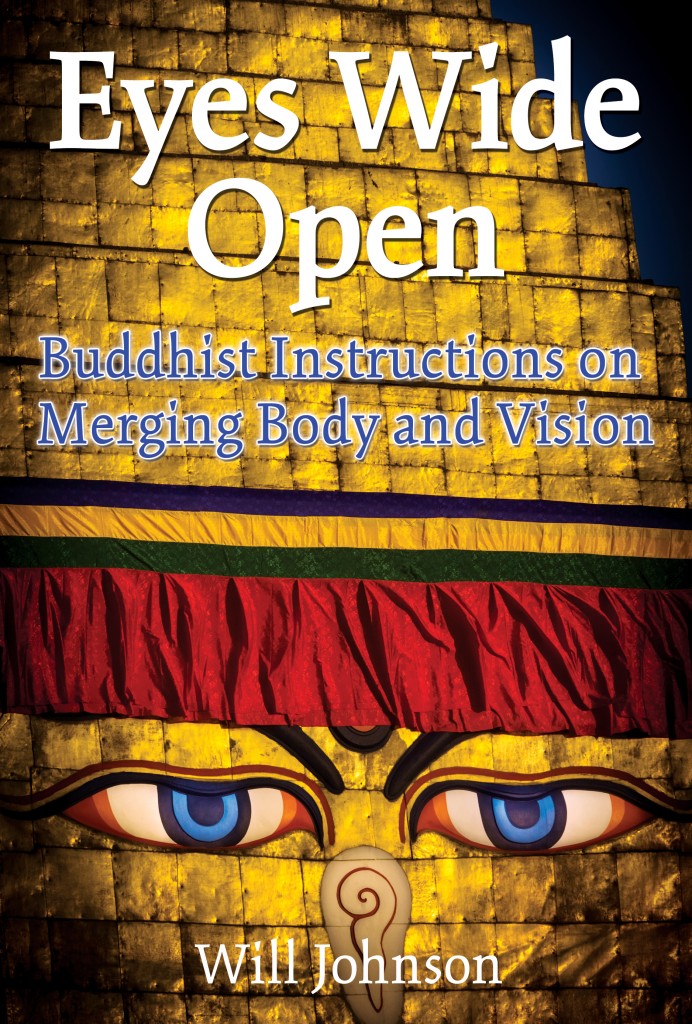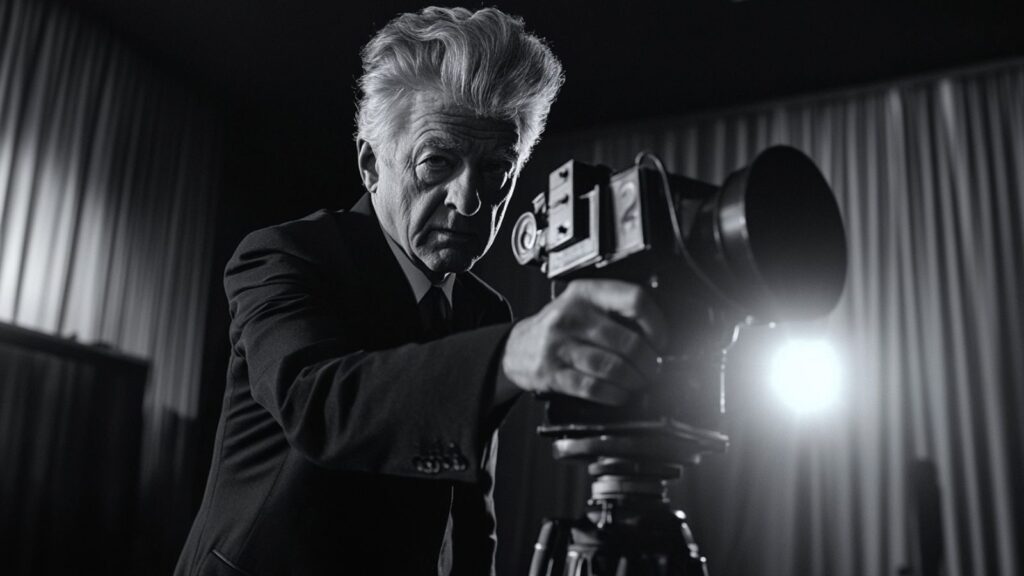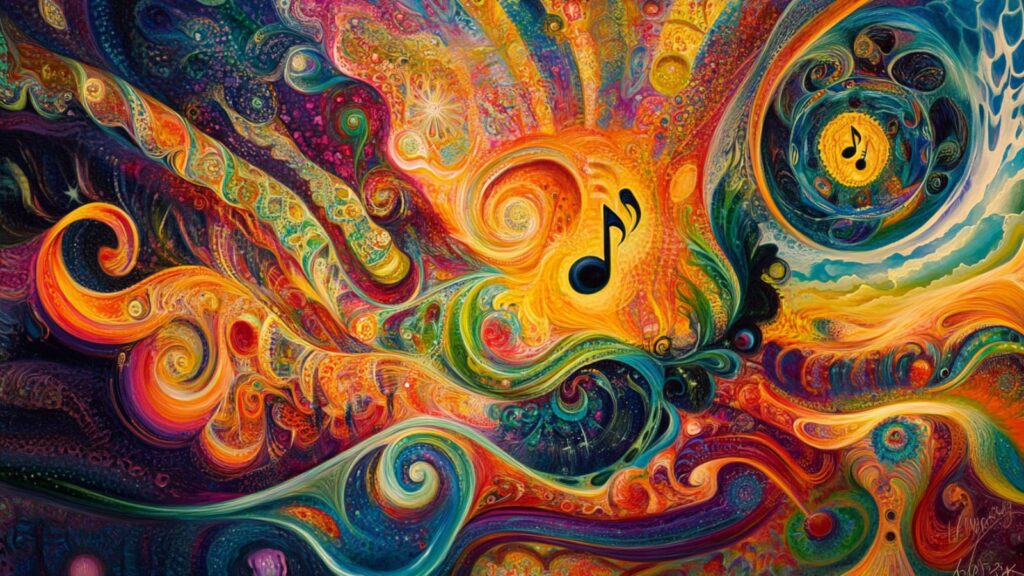The following article is excerpted from Eyes Wide Open by Will Johnson, published by Inner Traditions.
the body is the tree of awakening
Shenxiu’s poem begins by telling us that the body is the tree of awakening. It does not say the tree of the wish-fulfilling jewel, the tree of the fruit of life, the tree of restful dreams, the tree of abundance. It says the tree of awakening. What happens at that tree is an awakening, and the awakening needs to occur in the body.
But what’s so sleepy about the body? And what needs to wake up?
The body has fallen asleep through our having lost touch with its feeling presence, its palpable, organic, felt life, its vibrancy so deeply sourced in sensation. We lose ourselves in thought and tense ourselves in ways that hold this vibrancy in and stifle its emergent, felt glow. It’s as though we’ve turned down the dimmer switch on the body’s felt presence, just as a nursery school teacher will dim the lights when it’s time for the small ones to take their nap, and in the darkening that’s ensued our bodies have become very sleepy indeed.
And so the first thing that Shenxiu tells us is that, in order to contact our essential nature, we need to wake the body up. We need to rekindle its felt presence, nudge it gently out of its sleepiness (again like the kindly nursery school teacher), and welcome it back into a more wakeful state.
To awaken the body is to awaken the long-dormant tactile sensations that fill the body from head to foot. So small, oscillating so fast, these minute little pinprick blips and wavelets of sensation, once awakened, can be felt as part of a massed flow or current, a felt shimmer, vibrating lightly here, surging strongly there, pulsing, throbbing, dancing, effervescing throughout the entire body.
Simply by placing your relaxed awareness in any part of the body, sensations that have long been asleep, in a kind of hibernation, mostly unfelt and blanketed over, can start to wake up. They begin to hum, throb, pulsate, to come back to life, and this vibratory tingling, this sparkling into wakefulness, can be immediately and directly felt.
Sensations are the flowers on the tree of awakening, in constant bloom as the body wakes up to itself, one bursting cluster after another, lightly buzzing here, suddenly cascading there, tingling, vibrating, a current of flow, nothing unmoving or solid, like individual droplets of water in the current of the life force that flows through you like a stream through a meadow.
But while sensations can be felt to exist everywhere in the body, we ordinarily have little awareness of them. Ours is a strongly disembodied, even somatophobic, culture and we suppress the feeling presence of the body. We hold sensations in and, in doing so, dull them. We blanket them over and hold back their glow. We value psyche over soma—the life of the intellect with its abilities to formulate abstract thought and linguistic concept over the body with its singular ability to feel. And yet it is the simple sensory field of bodily sensation that Shenxiu points to as the source of an awakened knowing that can lead us out of the muddle that layers of abstract thought have so successfully built up around us.
For the body to awaken from its dreamy sleep, sensations need to be allowed to come out of exile, pardoned for crimes they never committed, welcomed back into the cloth of awareness, given permission to once again make their shimmer felt. Suppressing the natural condition of the body’s felt shimmer, we’re mostly only aware of isolated pockets of pain, generalized unpleasant sensation or large-scale numbness, and the occasional rush of bodily pleasure, fleeting as it may be. And so, Shenxiu tells us that we need to awaken the slumbering body and reembrace the whole extraordinary field of sensation, every bit as major a sensory field as the fields of vision and sound, but one to which we mostly remain blind and deaf, literally out of touch.
To better understand the mechanisms that keep sensations so sleepy, it’s helpful to examine the relationship between body and thought. The sensational presence of the body remains dormant, unfelt, and asleep as long as we stay lost and adrift in unbidden thought, consumed by the story lines that the mind incessantly spins and pours out, like some feverishly active, linguistic version of a silkworm. If we’re really honest in examining what’s actually happening to us at any given moment, we quickly realize that a large portion of our moment-to-moment experience is taken up by the domineering presence of the internal, mostly involuntary, monologue of the mind, the silent voice inside one’s head that keeps speaking and making pronouncements about incidents, events, people in our lives, feelings, fantasies, perceptions, fears, regrets, hopes.
Sometimes this monologue sounds like a play-by-play sports announcer, describing in detail our every move, our every scored goal, our every dropped ball. Sometimes it’s more like a political commentator, analyzing and explaining what’s going on in our life, exploring the situations and causes that have led to this moment, offering predictions of what’s likely to follow as a result (and not infrequently spinning the news, like the silkworm again, to support a particular ideology). Sometimes the monologue criticizes, judges, admires, or makes comparisons with the behavior of others. Sometimes it gets completely caught up in the drama of our personal lives and story lines, our excitement and despair.
Our unbidden thoughts gravitate strongly to playing back events that occurred in the past and to looking forward to events that are yet to come. What they’re incapable of accessing, however, is an awareness of what’s actually happening to us right now, in this very moment. And this is where body comes in, for this is what body is so adept at doing. Sensations are so evanescent, so transitory in appearance—arising and passing away, appearing and disappearing with such rapidity—that we can only be aware of them, only feel and know them, right now and it is this ever-morphing realm of right now that the Buddhist dharma is so interested in exploring. Past and future are places in the mind; right now is the felt experience of the body.
The relationship between sensations in the body and random thoughts in the mind is an uneasy one at best. Mostly, the relationship is like a teeter-totter: when one side is elevated, the other is suppressed. It’s not possible to be lost in thought and present in body at the same time. At those moments when we drift off into internal monologues, we block out and lose awareness of body as feeling presence. It’s as though the appearance of unbidden thought—the ongoing chatter of the internal, involuntary monologue—has a numbing effect on sensation. Lost in thought, you lose awareness of body.
The teeter-totter needn’t be stuck in this one place, though. It can shift position, and suddenly what was elevated drops down and what was suppressed rises up. While it is true that lost in thought, we can’t be present in body, what is also true is that once we allow sensations to be fully stirred and kindled (what the great twentieth-century Burmese vipassana teacher U Ba Khin referred to as “activating anicca,” kindling an awareness of body as a field of constantly changing, shimmering sensations), once we let ourselves feel body, once we bring it back to life, awaken it from its slumber . . . in that moment unbidden thought stops.
In an awakened body, consciousness will naturally function more like a mirror. Random thoughts and entrenched beliefs create the dust that Shenxiu refers to later in the poem, a kind of obscuring coating, a filmy layer that keeps the mirror of the mind cloudy and the sensations of the body blanketed over.
So either you’re lost in your mind or present in your body. You can’t be both at once. When there’s a great deal of semiconscious monologizing going on, mind serves as a barrier that separates the visual field that you look out on from the place in the center of your being out from which you’re looking, and so you reinforce your sense of being separate from the universe in which you live. When you’re able to kindle awareness of body as a unified field of shimmering, vibratory, tactile sensations and energies, the barrier starts dissolving and the place from which you look and the visual field out on which you look start merging back together into a more unified, coterminous phenomenon.
How do you feel sensations? How do you let their presence emerge? How do you welcome them back into felt awareness? How do you help them wake up?
The most powerful thing you can do is simply give yourself permission to feel them and then turn your attention to them. You can’t force them into appearance. You can’t manufacture or create them. Even though you may not be aware of them, they’re still here in potentia all the time, like an object waiting patiently in a drawer you rarely open, and you can’t create something that’s already here.
Even though our culture may have a strange bias against doing so (and as ludicrous as it feels to even have to say this), know that it’s completely okay to open to the feeling presence of the body. It’s okay to let sensations come forward into feeling. It’s okay to surrender to their organic current and presence, giving yourself permission to feel their vibrancy and life, shedding the taboo that, for whatever reason, our culture has placed on their awareness. And it’s also okay, even sublimely natural, to enter into the condition of consciousness that felt presence reveals.
First you invite them back. And then you turn your attention to them. By focusing your attention on any small part of the body, sensations that have taken you up on your welcoming gesture naturally start surfacing, like stars coming out in the early evening sky. Keep allowing sensations and turning your attention to them, and more and more keep emerging until, one day, the sky of the body, like a view of the Milky Way on a clear night in a remote desert, is filled full with them. Remember: we’re only unaware of them because our attention is elsewhere. By simply turning your attention to them, you shine a warming light on them and they begin to wake up and come out of their shadowy slumber. They sparkle, they tingle, they shimmer.
One of the many remarkable tenets of twentieth-century physics suggests that there’s no such thing as completely objective observation. As soon as you turn your attention to something, you somehow start affecting what you’ve turned your attention to; something in your focus starts interacting with what you’re focusing on. In the case of sensations, as soon as you start paying them attention, they respond by waking up and coming back to felt life.
While it may take time and consistent effort to become fully conversant with the felt range of sensations throughout your body, just letting yourself feel the body right now—this giving permission to sensations—is as sophisticated a strategy to awaken them as anything. Some of the sensations in the body may feel achy, others numb. Some may feel tingly and fizzy, like a carbonated beverage. Others softly shimmer, as though the body were emitting a natural glow. Some feel very good. Others hurt. All of them are your body.
The good news is that sensations can be aroused, resurrected, woken up from their long sleep, welcomed back into the fold of direct and immediate experience after their long ostracism. The even better news is that we needn’t do anything heroic to nudge them back into felt awareness. We just need to turn our attention to them.
***
Eyes Wide Open by Will Johnson © 2016 Inner Traditions. Printed with permission from the publisher Inner Traditions International. www.InnerTraditions.com














